Image Archive



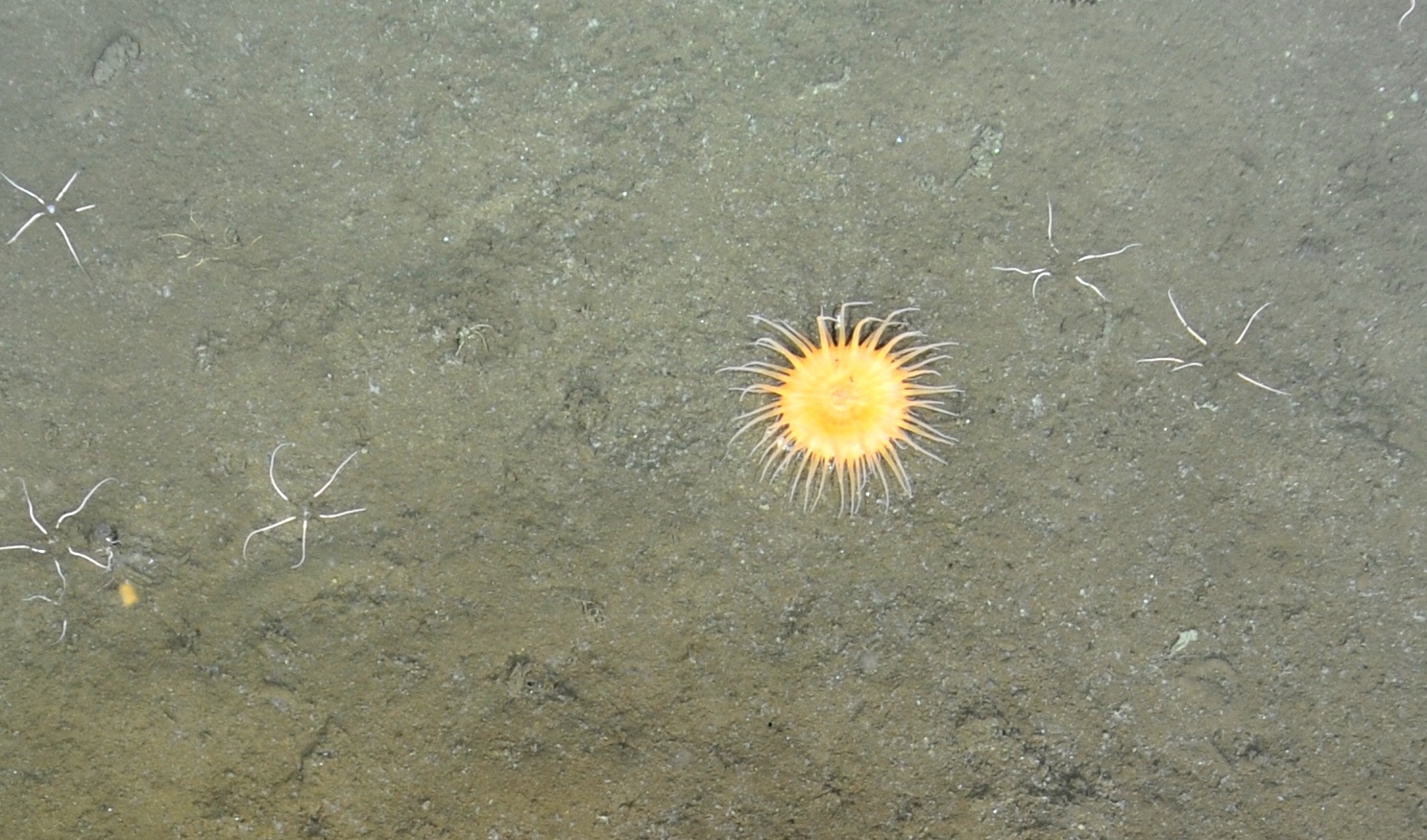


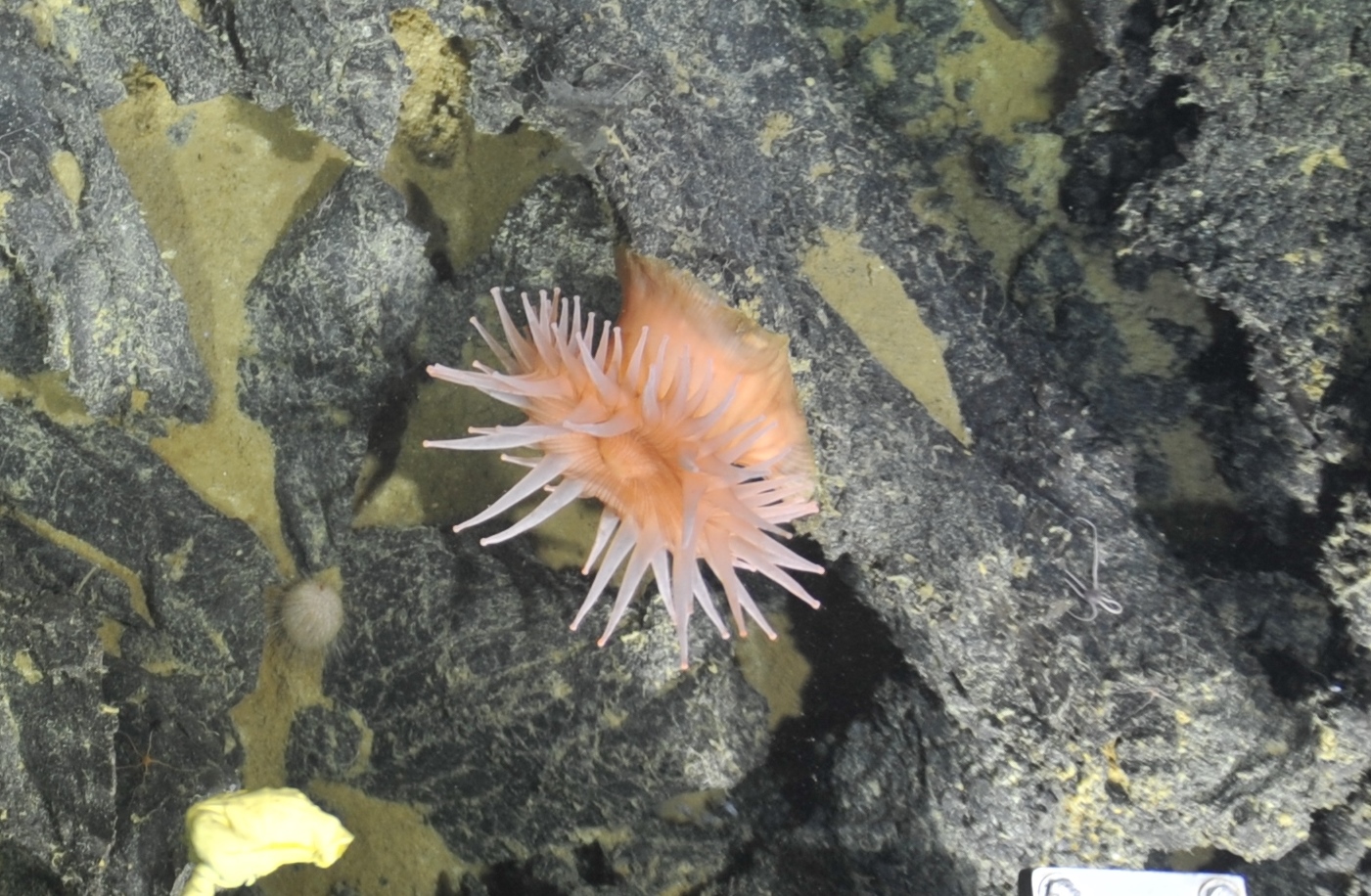






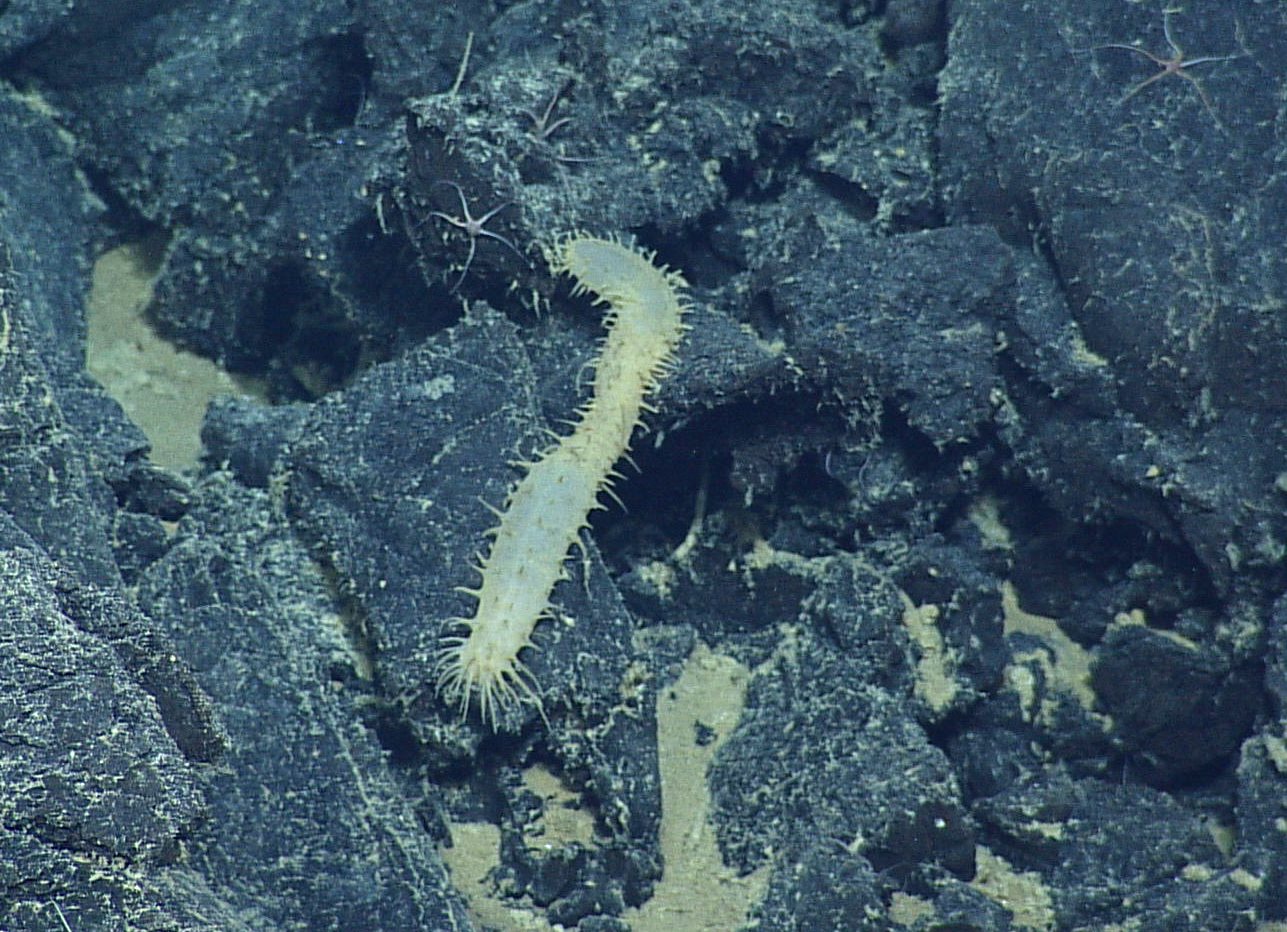
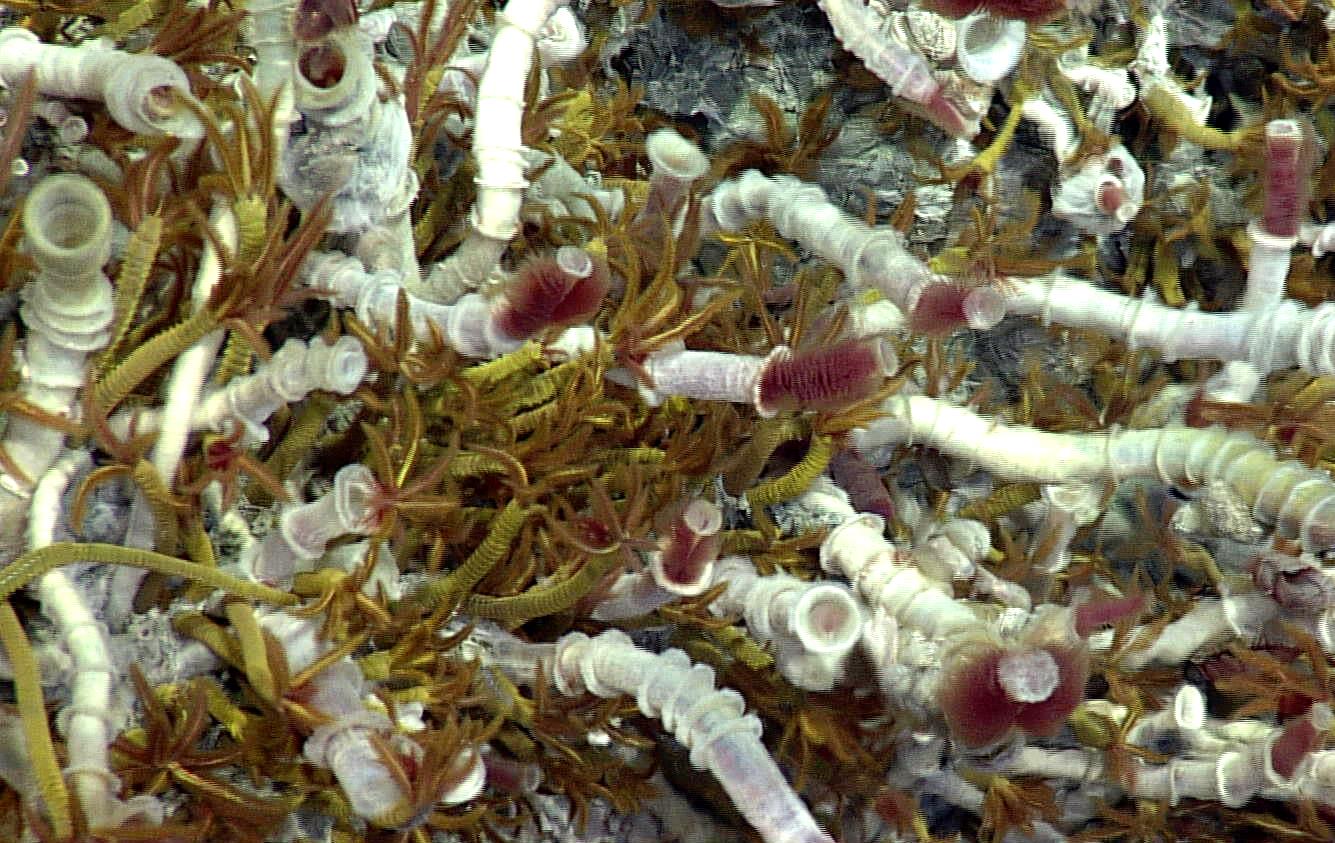

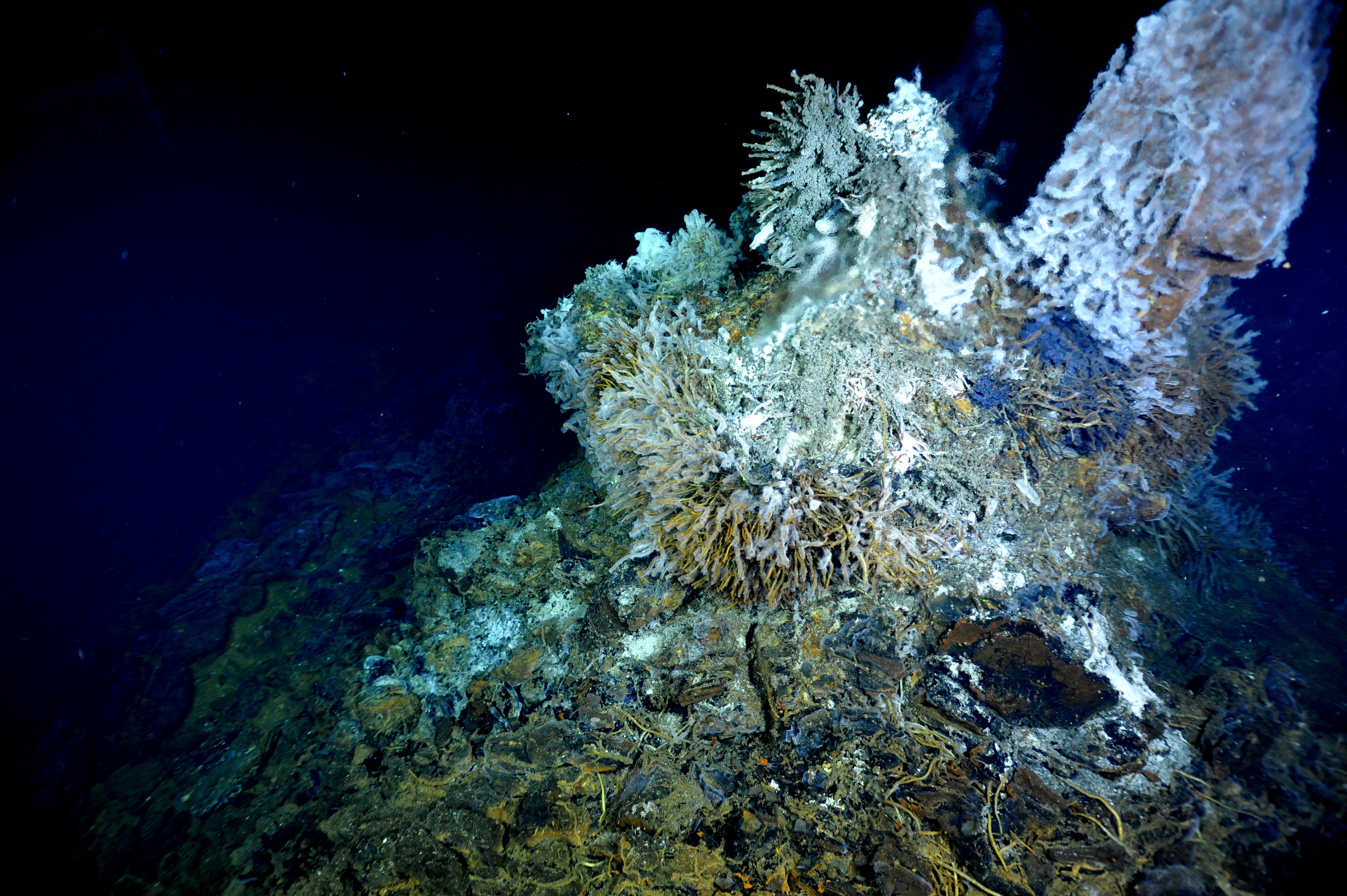

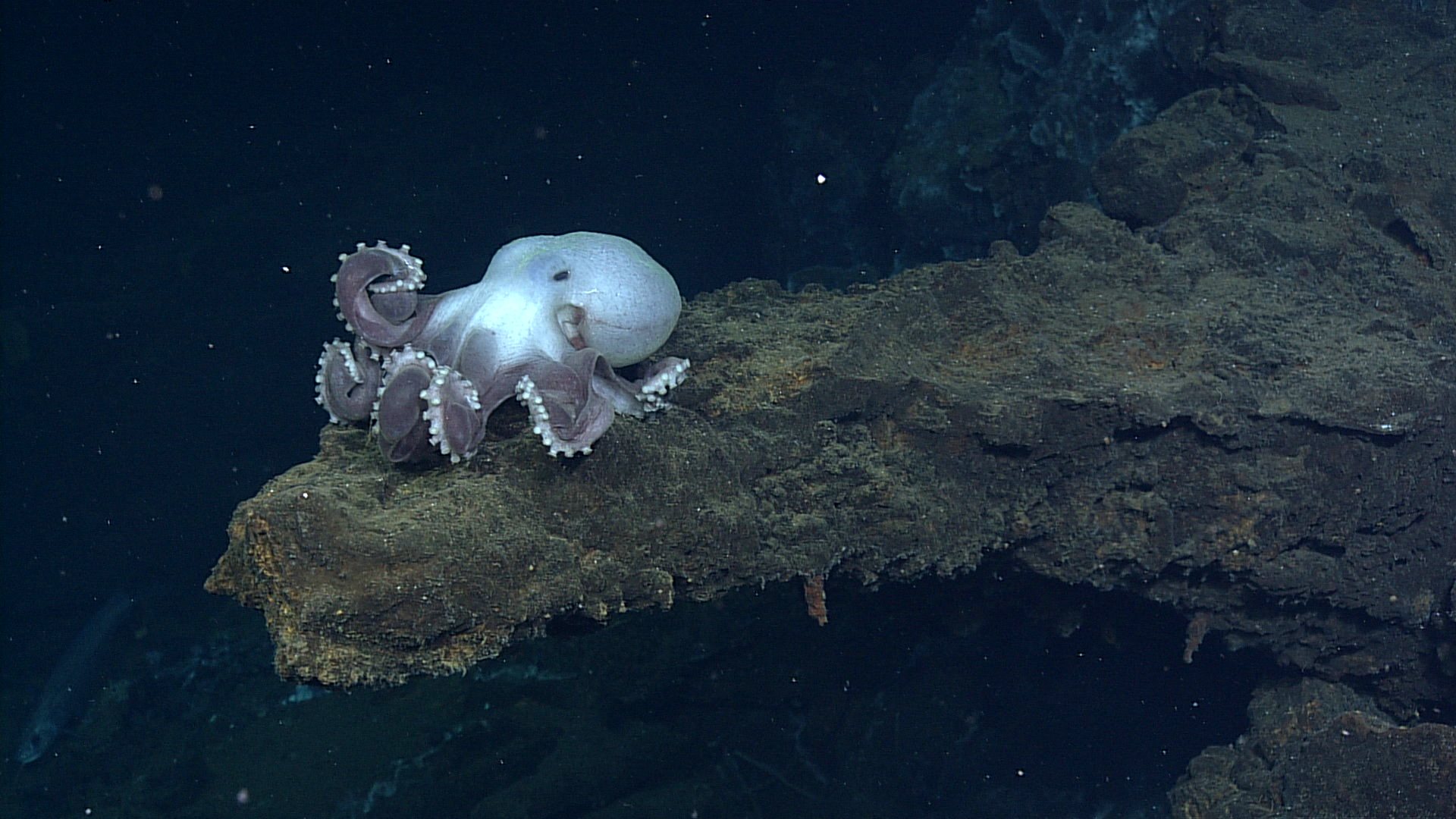

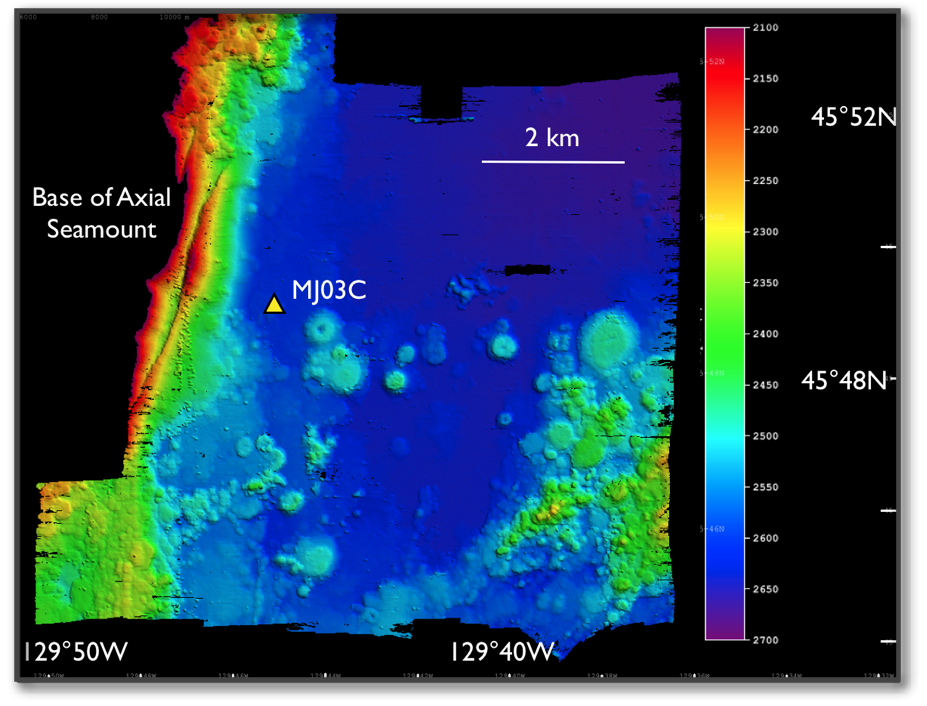


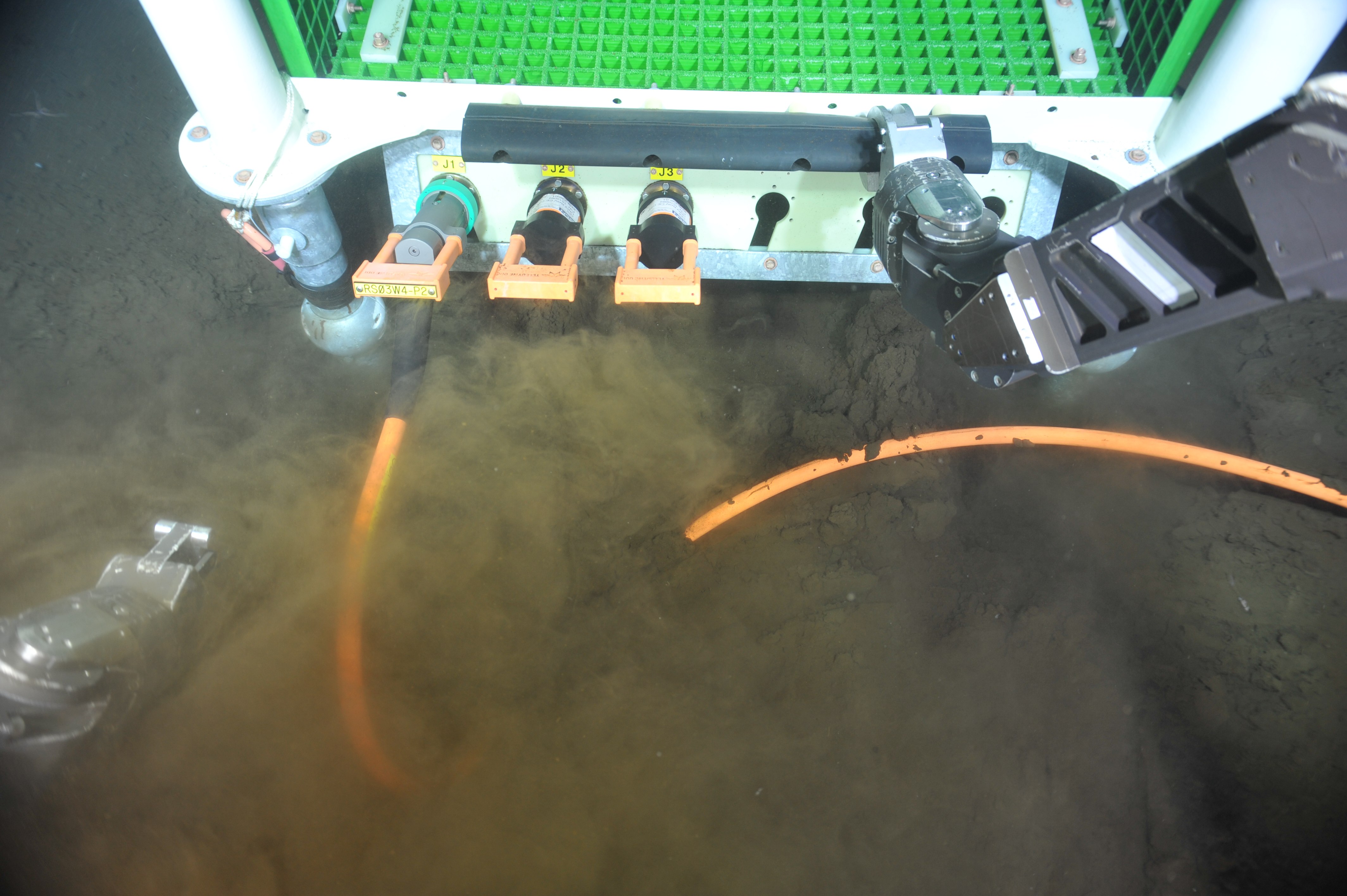





An interesting perspective of this Dinner Plate Jelly (Solmissus sp.) and the Remotely Operated Cable Laying System (ROCLS) spool, makes the jelly look enormous. Photo credit: Photo credit: NSF-OOI/UW/CSSF; Dive R1604; V13

These dinner plate jellies are a frequent sight during ROPOS dives on Axial Seamount. Photo credit: NSF-OOI/UW/CSSF; Dive R1713; V14

This large jelly is called a Fried Egg Jelly (Phacellophora cantschatica). It normally is a pelagic organism, however this one is on the seafloor, making it vulnerable to spider crab feasting. Photo credit: NSF-OOI/UW/CSSF; Dive R1619; V13

A solitary anemone lives on the sediment seafloor with brittle stars at the base of Axial Seamount. This may be a Jack-o-Lantern Lid anemone. Photo credit: NSF-OOI/UW/CSSF; Dive R1715, V14.

This unknown species of anemone was found on the sediments at the base of Axial Seamount. Photo credit: NSF-OOI/UW/CSSF; Dive R1624; V13

A low-frequency hydrophone (black tubular-shaped instrument in tripod with red legs), connected to a broadband seismometer, awaits installation by the ROPOS that will install this sensor in the International District 2 Site. Pea gravel bags in the background will be piled over the broadband to dampen any noise by local currents. Credit: Mitch Elend, University of Washington, V14.

This pink anemone was found at Axial Seamount, affixed to the lava rocks. Photo credit: NSF-OOI/UW/CSSF; Dive R1712; V14

An unknown anemone is attached to the lava rocks at Axial Seamount. Photo credit: NSF-OOI/UW/CSSF; Dive R1608; V13

A bottom pressure-tilt instrument is installed at the summit of Axial Seamount in the International District hydrothermal field. This instrument measures the rise and fall of the seafloor due to melt migration in the subsurface. Currently, the seafloor is rising and this is believed to reflect the influx of magma into the core of the volcano.The instrument rests on a frozen lava flow - called a sheet flow. The small black marble in the yellow plate at the instrument base indicates that the platform it level. Photo credit: NSF-OOI/UW/CSSF; Dive R1723; V14.

Two Squat Lobsters on Escargot vent, Axial Seamount. Credit: UW/NSF-OOI/CSSF; V11

A bottom pressure-tilt instrument is installed at the Eastern Caldera Site on the summit of Axial Seamount. Image Credit: VISIONS'13, UW/OOI/CSSF; Dive R1617; V13.

A broadband seismometer installed at Eastern Caldera is coupled to a low-frequency hydrohone. Bags of pea gravel decrease "noise" from currents. Credit: UW/NSF-OOI//CSSF; ROPOS Dive R1722; V14.

A rattail fish (Coryphaenoides acrolepis) is a common site at the summit of Axial Seamount. Credit: UW/NSF-OOI/CSSF; Dive R1720; V14.

A Deep-Sea Cucumber (possibly Pannychia moseleyi) inhabits the lava flows of Axial. Credit: UW/NSF-OOI/CSSF; ROPOS Dive R1721; V14.

Palm Worms (Paralvinella palmiformis) coexist with Ridgeia Tubeworms on hydrothermal vents at Axial Seamount. Credit: UW/NSF-OOI/CSSF; ROPOS, V13.

On July 18, 2014 the Low-Voltage Node LV03A was deployed at Axial Base. It was moved on R1715 to its final location. It will provide power and communications to two moorings to be installed at this site. Primary Node PN3A is to the right. Photo credit: NSF-OOI/UW/CSSF; Dive R1714; V14.

El Gordo, at International District, is a site for Regional Cabled Array instrumentation in 2014. Brown tubes are stressed tubeworms covered in filamentous bacteria. Credit: UW/NSF-OOI/CSSF; ROPOS Dive R1719; V14.

Ciliates, purple single-celled Protists, colonize the base of Escargot hydrothermal vent. Credit: UW/NSF-OOI//CSSF; ROPOS Dive R1719; V14.

The large pink octopus (likely Muusoctopus sp.) sits on a ledge at Escargot hydrothermal vent in the International District Hydrothermal Field. Credit: UW/NSF-OOI/CSSF; ROPOS Dive R1719; V14.

Medium-Power Junction Box MJ03C rests on the platform for ROPOS, awaiting connection to the underbelly of ROPOS. This node was installed on the seafloor during dive R1717.

Brendan Philip, a recent graduate from the School of Oceanography undergraduate program, designed and ran this EM302 bathymetric survey in the area where two RSN-OOI moorings will be installed at the base of Axial Seamount. Photo credit: Deb Kelley, University of Washington, V14.

The ROV ROPOS has an RSN-OOI , medium-powered junction box, MJ03C, secured to its underbelly for transport to the International District hydrothermal vent field. The junction box will provide power and communication to a diverse suite of chemical, temperature, and biological sensors, in addition to a digital still camera. Photo credit: NSF-OOI/UW/CSSF; Dive R1717; V14.

Holothurians and brittle stars at the base of Axial Seamount. Photo credit: NSF-OOI/UW/CSSF; Dive R1717; V14.

The 1 km extension cable from the Primary Node PN3A at the base of Axial Seamount is connected to the low voltage node LV013A, which will feed the two moorings at this site. Photo credit: NSF-OOI/UW/CSSF; Dive R1717; V14.

A Big Red jellyfish (Tiburonia granrojo) swims past the high-definition camera on the remotely operated vehicle ROPOS. The water depth was 1547 m (5075 ft) beneath the ocean's surface. Credit: UW/NSF-OOI/CSSF; ROPOS Dive R1716; V14.

Several species of macrofauna inhabit the thick sediments at the base of Axial Seamount. A large sea cucumber deep sea Holothurian coexists with abundant brittle stars and Peniagone sea cucumbers. Photo Credit: NSF-OOI/UW/CSSF; Dive R1715; V14.

This large sea cucumber (Holothurian) was seen with many smaller sea cucumbers of Genus Peniagone at the base of Axial. Photo Credit: NSF-OOI/UW/CSSF; Dive R1715; V14.

The ROCLS cable drum is unlatched on the seafloor at the base of Axial Seamount near PN3A at a depth of 2600 m. The cable, once plugged into a junction box and Primary Node, will power and communicate with ~2600 m-tall (8500 ft) instrumented moorings, as well as seafloor instruments. Photo Credit: NSF-OOI/UW/CSSF; Dive R1715; V14.
- Anemone
- Animal
- Arthropod
- ASHES
- Axial
- Axial Base
- Axial Biology
- Axial Caldera
- Bacteria
- Basalt Lava
- BEP
- Biofouling
- biolgoy
- Biology
- Camds
- Camera
- Camhd
- Central Caldera
- Ciliates
- Cnidaria
- Coastal Biology
- Crab
- Deep Profiler Mooring
- Dive Highlights
- Eastern Caldera
- Echinoderms
- Endurance Array
- Engineering Team
- ENLIGHTEN 10
- Exploratorium
- Fish
- Geology
- HD Camera
- HPIES
- Hydrate Ridge
- Hydrates
- Hydrophone
- Hydrothermal Vents
- Illustration
- Inshore 80 Meters
- Instrument
- International District
- J-BOX
- Jason
- Jellyfish
- Junction Box
- K12
- Lava
- Mollusk
- Moorings
- Nodes
- Nudibranch
- Octopus
- OOI
- Oregon Offshore
- Oregon Offshore 600 m
- Oregon Shelf
- Oregon Slope Base
- People
- PN1B
- PN1D
- Polychaetes
- PPSDN
- Primary Node
- RASFL
- ROCLS
- ROPOS
- ROPOS Dives
- ROV Team
- RV Revelle
- RV Sikuliaq
- RV Thompson
- Salp
- Sample
- SC13
- Science Team
- Sea Cucumber
- Sea Star
- Sea Urchin
- Seafloor
- Seismometer
- Sensors
- Shallow Profiler Mooring
- Shark
- Shipboard
- Shore Station
- Slope Base
- Smoker
- Soft Coral
- Southern Hydrate Ridge
- Sponge
- Squid
- Students
- Students & Guest Participants
- Tmpsf
- Tubeworms
- VISIONS 11 Leg 1
- VISIONS 11 Leg 2
- VISIONS 11 Viewers
- VISIONS 13
- VISIONS 14
- VISIONS 15
- VISIONS 16
- VISIONS 17
- VISIONS 18
- VISIONS 20
- VISIONS 22
- VISIONS 23
- Visualization
